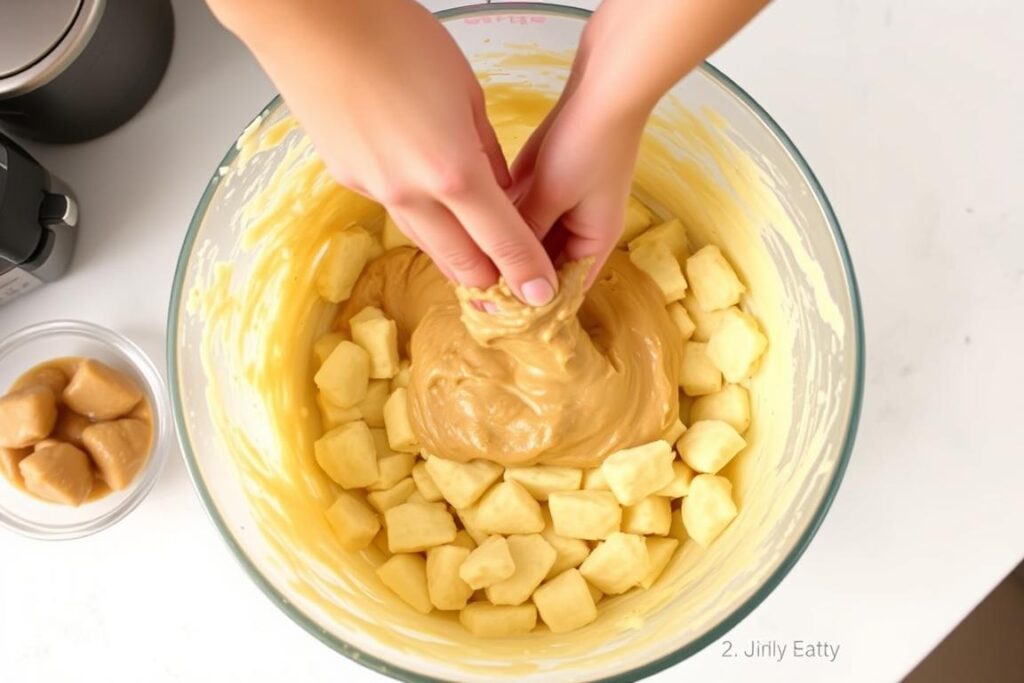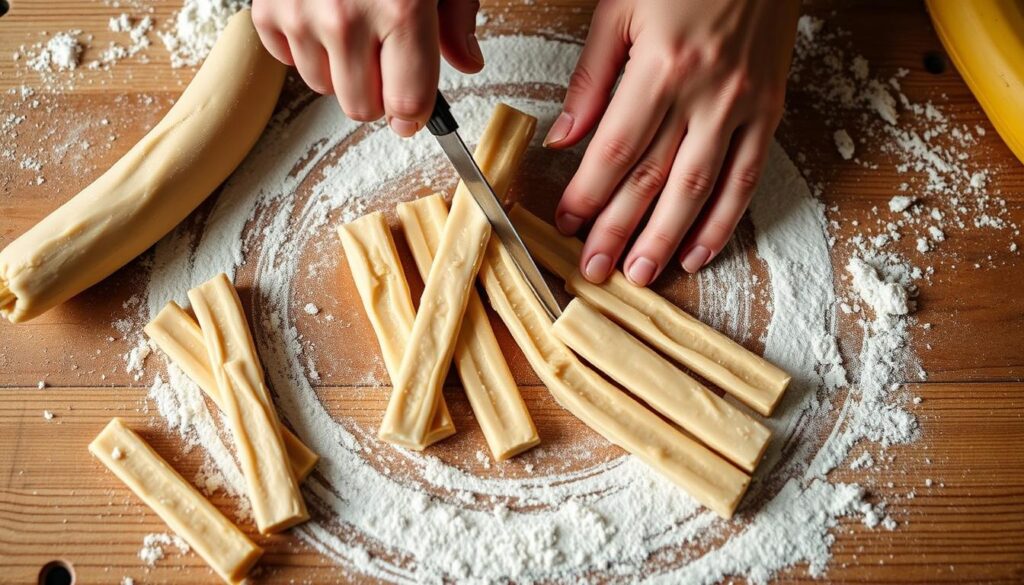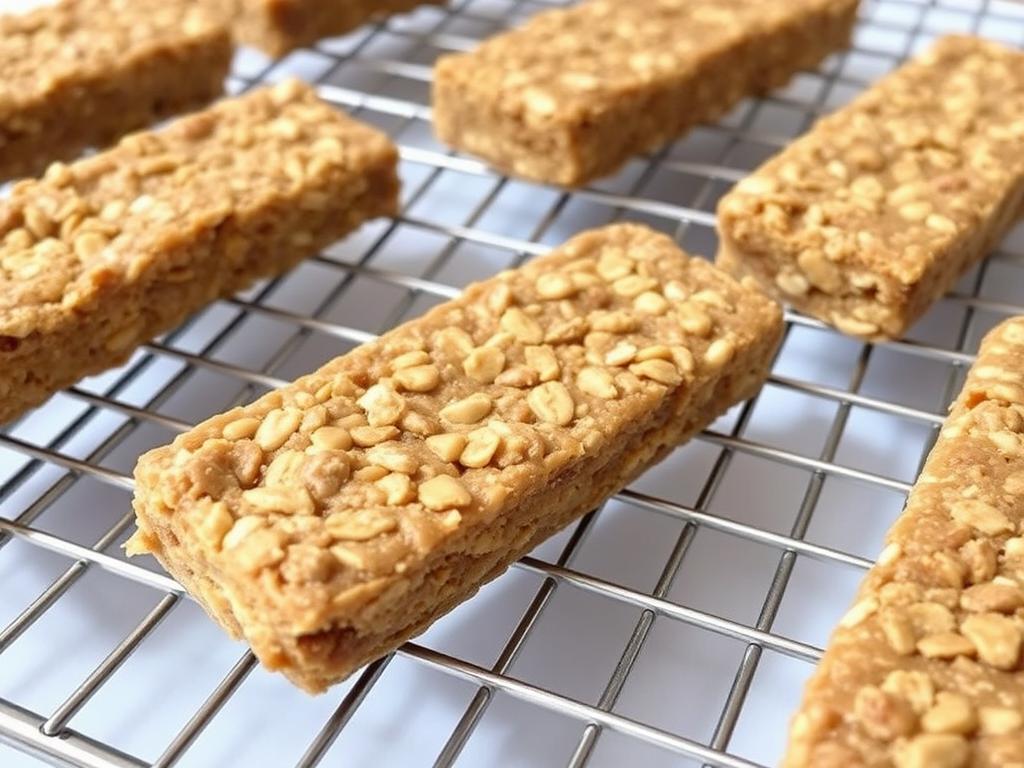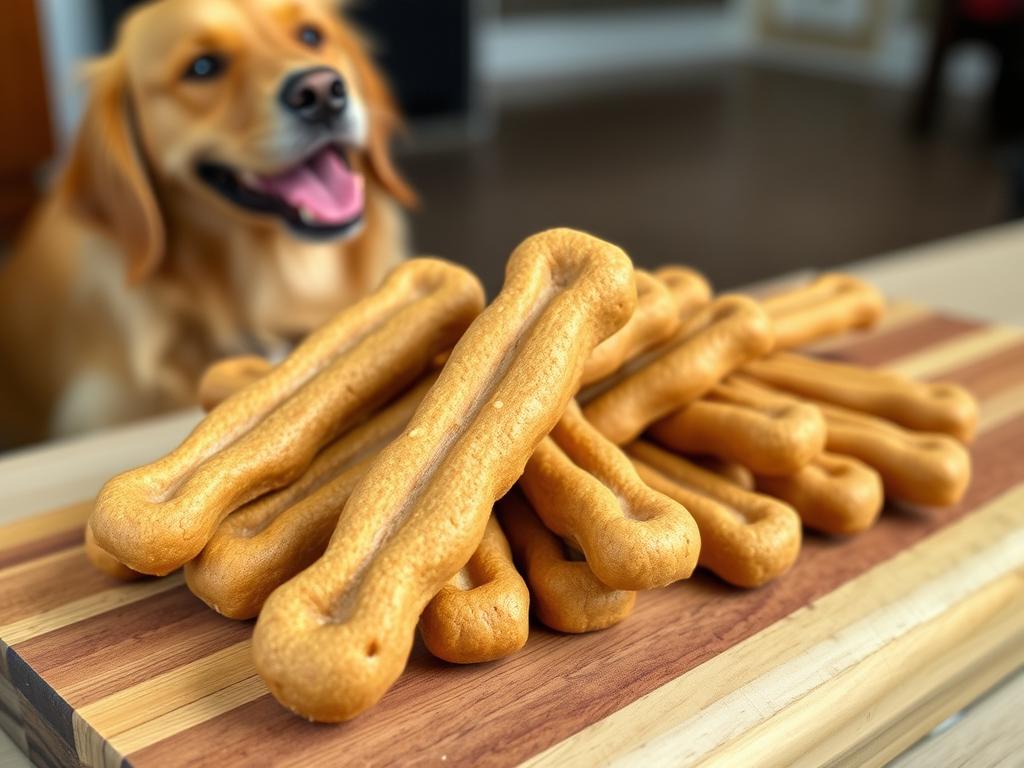What makes these treats special is their perfect balance of nutrition and enjoyment. Bananas provide essential potassium and vitamins, while natural peanut butter offers healthy fats and protein. The best part? You can create these delicious chew sticks using ingredients you likely already have in your pantry, making them an affordable alternative to expensive commercial treats!
Ingredients for Banana and Peanut Butter Chew Sticks
These chew sticks use simple, wholesome ingredients that are beneficial for your dog’s health. Bananas are rich in potassium and vitamin B6, while natural peanut butter provides protein and healthy fats that support your dog’s energy levels and coat health.

Basic Ingredients:
- 2 ripe bananas (mashed)
- 1 cup natural peanut butter (xylitol-free)
- 2 cups oat flour (or whole wheat flour)
- 1/2 cup unsweetened applesauce
Optional Add-ins:
- 1 tablespoon honey (for extra binding and sweetness)
- 1/4 cup ground flaxseed (for added omega-3 fatty acids)
- 1 egg (for extra protein and binding)
- 1/2 teaspoon cinnamon (for flavor and anti-inflammatory benefits)
Step-by-Step Instructions
Creating these banana and peanut butter chew sticks is straightforward and requires minimal baking experience. The process takes about 15 minutes of preparation and 25-30 minutes of baking time, resulting in delicious treats your dog will adore.

- Preheat your oven to 350°F (175°C) and line a baking sheet with parchment paper for easy cleanup.
- Mash the bananas in a large mixing bowl until smooth. Very ripe bananas work best as they’re easier to mash and naturally sweeter.
- Add the peanut butter to the mashed bananas and mix thoroughly until well combined. Make absolutely certain your peanut butter does not contain xylitol, as this sweetener is extremely toxic to dogs.
- Stir in the applesauce until the mixture has a uniform consistency. This adds moisture and helps bind the ingredients together.
- Gradually add the oat flour, mixing well after each addition until a stiff dough forms. The dough should be firm enough to hold its shape but still pliable.
- If using any optional add-ins, fold them into the dough now. The egg will make the treats slightly crispier, while flaxseed adds nutritional benefits.
- Transfer the dough to a lightly floured surface and roll it out to approximately 1/4 inch thickness.
- Cut the dough into stick shapes approximately 4-5 inches long and 1/2 inch wide. You can use a pizza cutter or knife for this step.
- Place the sticks on the prepared baking sheet, leaving a small gap between each to allow for even baking.
- Bake for 25-30 minutes or until the sticks are firm and golden brown. For chewier treats, bake for less time; for crunchier treats, bake longer.
- Allow the treats to cool completely on the baking sheet before serving to your dog.
Safety Tip: Always check your peanut butter label carefully to ensure it does NOT contain xylitol (sometimes listed as “birch sugar”). This artificial sweetener is extremely toxic to dogs and can cause liver failure, even in small amounts.
Recipe Variations:
- Grain-Free Version: Substitute oat flour with coconut flour or almond flour (use about 1/2 the amount as these flours absorb more moisture).
- Extra-Protein Sticks: Add 2 tablespoons of unflavored protein powder or replace applesauce with plain Greek yogurt.
- Pumpkin Power: Substitute half the banana with pure pumpkin puree (not pie filling) for added fiber and vitamin A.
- Dental Health Boost: Add 1 tablespoon of finely chopped fresh parsley or mint to help freshen your dog’s breath.

Serving Suggestions & Storage
These banana and peanut butter chew sticks are versatile treats that can be served in various ways depending on your dog’s preferences and needs. Here’s how to serve and store them for maximum freshness and enjoyment.
Serving Ideas:
- Size appropriately: For small dogs (under 15 lbs), break the sticks in half. Medium dogs can enjoy a full stick, while larger breeds might enjoy two at a time.
- Training rewards: Break into smaller pieces for high-value training treats that won’t crumble in your pocket.
- Stuffed toys: Place a stick inside a hollow rubber toy for extended playtime that exercises your dog’s mind.
- Frozen option: For teething puppies or hot days, freeze the sticks for 2-3 hours before serving for a cooling, soothing treat.
- Special occasions: Arrange several sticks in a star pattern on a plate for a festive birthday “cake” alternative.
Storage Instructions:
- Room temperature: Store in an airtight container for up to 5 days. This maintains the chewy texture most dogs prefer.
- Refrigerator storage: Keep in an airtight container for up to 2 weeks. The sticks will become slightly harder but still chewy.
- Freezer storage: Place in a freezer-safe container with parchment paper between layers to prevent sticking. Treats will stay fresh for up to 3 months.
- Thawing: If frozen, allow treats to thaw at room temperature for about 30 minutes before serving for the best texture.
Nutritional & Safety Notes
Health Benefits:
- Bananas provide potassium, vitamin B6, and fiber for digestive health
- Natural peanut butter contains healthy fats, protein, and vitamin E
- Oat flour offers complex carbohydrates and is generally well-tolerated by dogs with sensitivities
- Applesauce adds moisture, vitamin C, and natural sweetness
- Flaxseed (if used) provides omega-3 fatty acids for coat health and inflammation reduction
Important Safety Notes:
- Always use xylitol-free peanut butter as this sweetener is extremely toxic to dogs
- Introduce gradually if your dog hasn’t had these ingredients before
- Monitor calorie intake as treats should make up no more than 10% of daily calories
- Adjust serving size based on your dog’s weight and activity level
- Consult your veterinarian before introducing new treats if your dog has health conditions
Substitutions for Dogs with Allergies or Sensitivities:
| Ingredient | Allergy Concern | Substitution |
| Peanut Butter | Peanut sensitivity | Sunflower seed butter or pumpkin puree |
| Oat Flour | Grain sensitivity | Coconut flour (use half the amount) or chickpea flour |
| Applesauce | Apple sensitivity | Mashed sweet potato or pumpkin puree |
| Egg (optional) | Egg allergy | 1 tablespoon ground flaxseed mixed with 3 tablespoons water |
Warning: While all ingredients in this recipe are generally safe for dogs, every dog is unique. Some dogs may have individual sensitivities or allergies to certain foods. Always introduce new treats gradually and monitor your dog for any adverse reactions such as itching, digestive upset, or changes in behavior. If you notice any concerning symptoms after giving these treats, discontinue use and consult your veterinarian.
Frequently Asked Questions
Here are answers to common questions about making and serving banana and peanut butter chew sticks for dogs.
Can I freeze these banana and peanut butter chew sticks?
Yes, these chew sticks freeze exceptionally well. After baking and cooling completely, place them in a freezer-safe container with parchment paper between layers to prevent sticking. They’ll stay fresh for up to 3 months in the freezer. Freezing actually makes them last longer during chewing sessions, which is perfect for aggressive chewers or for cooling relief on hot days. Allow frozen treats to thaw for about 30 minutes before serving, or give them directly from the freezer for a refreshing cold treat in summer months.
Are bananas safe for dogs to eat?
Yes, bananas are generally safe and healthy for dogs when given in moderation. They’re packed with potassium, vitamins, biotin, fiber, and copper. They’re also low in cholesterol and sodium, making them a healthier treat option compared to many commercial alternatives. However, bananas do contain sugar, so they should be given as an occasional treat rather than a daily staple, especially for dogs with diabetes or weight issues. The high fiber content can also cause digestive upset if too much is consumed at once, so start with small portions when first introducing bananas to your dog’s diet.
What kind of peanut butter is safe for dogs?
When selecting peanut butter for dog treats, always choose varieties that contain only peanuts and perhaps a small amount of salt. The most important thing is to ensure the peanut butter does NOT contain xylitol (also listed as “birch sugar”), which is extremely toxic to dogs and can cause liver failure even in small amounts. Avoid peanut butters with added sugars, oils, or artificial sweeteners. Natural, unsweetened peanut butter is best. Some brands specifically market pet-safe peanut butter, but regular human peanut butter is fine as long as you check the ingredients carefully. Organic options are good choices as they avoid pesticides and other chemicals.
How often can I give my dog these chew sticks?
These banana and peanut butter chew sticks should be given as occasional treats, not as regular meal replacements. A good rule of thumb is to limit treats to no more than 10% of your dog’s daily caloric intake. For most dogs, this means 1-2 chew sticks 2-3 times per week is appropriate. Small dogs should receive fewer or smaller treats, while larger, more active dogs can have slightly more. If your dog has health conditions like diabetes, obesity, or food sensitivities, consult with your veterinarian for specific recommendations. Always adjust your dog’s regular food portions on days when you provide treats to maintain a healthy weight.
Can I make these treats grain-free for my dog?
Absolutely! To make grain-free banana and peanut butter chew sticks, simply substitute the oat flour with coconut flour, almond flour, or chickpea flour. Keep in mind that coconut and almond flours absorb more moisture than grain-based flours, so you’ll need to use approximately half the amount (about 1 cup instead of 2). You may need to adjust the consistency by adding a bit more applesauce if the dough becomes too dry. Another excellent grain-free option is to use sweet potato flour or green pea flour, which both provide good binding properties. Always introduce new ingredients gradually, as some dogs may have sensitivities to certain grain alternatives.

Healthy Homemade Happiness: Treats Your Dog Will Love
Creating banana and peanut butter chew sticks for your dog is more than just a fun kitchen project—it’s an act of love that provides your furry companion with wholesome, nutritious treats free from artificial preservatives and mystery ingredients. These simple chew sticks combine the natural sweetness of bananas with the protein-rich goodness of peanut butter to create a treat that’s not only delicious but also offers genuine health benefits.
Whether you’re rewarding good behavior, providing a distraction during stressful times, or simply showing your pup some extra love, these homemade chew sticks are sure to earn you plenty of tail wags and appreciative licks. The best part is knowing exactly what goes into your dog’s treats, giving you peace of mind about what your beloved pet is consuming.
Remember to introduce these treats gradually, especially if your dog hasn’t had bananas or peanut butter before, and always serve in moderation as part of a balanced diet. With these simple precautions in mind, you and your furry friend can enjoy the rewards of homemade treat-making together—one delicious banana and peanut butter chew stick at a time!
